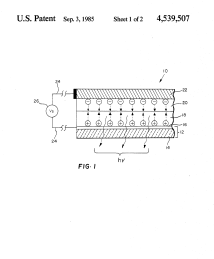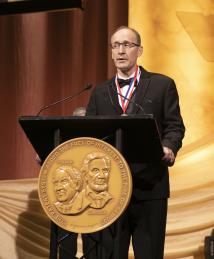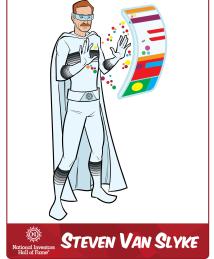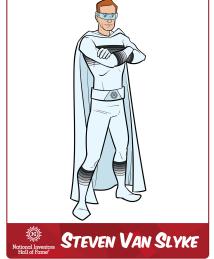Steven Van Slyke
"With OLED, there are many applications — and applications in the future we can’t even dream of at this point in time."
Steven Van Slyke and Ching Wan Tang pioneered the organic light emitting diode, or OLED, an advance in flat-screen displays found in computers, cellphones and televisions that provides increased power efficiency, longer battery life and improved display quality.
Van Slyke launched his 30-year career at Eastman Kodak Co. in 1979, when he and Tang began developing OLED technology. OLEDs can be used wherever LCDs are used. They are thinner, lighter, provide superior brightness and color, and offer ultra-fast response time for functions such as refreshing and on-off switching. Unlike LCDs that rely on a backlight that passes through color filters to produce light, OLED screens utilize luminescent organic materials to make their own light.
The first OLED product was a display for a car stereo, commercialized by Pioneer in 1997.
Kodak’s EasyShare LS633 digital camera, introduced in 2003, was the first consumer electronic product incorporating a full-color OLED display. The first television featuring an OLED display, produced by Sony, entered the market in 2008. Today, Samsung uses OLEDs in all of its smartphones, and LG manufactures large OLED screens for premium TVs. Other companies currently incorporating OLED technology include Apple, Google, Facebook, Motorola, Sony, HP, Panasonic, Konica, Lenovo, Huawei, BOE, Philips and Osram. The OLED display market is expected to grow to $57 billion in 2026.
Van Slyke earned his bachelor of science degree in chemistry from Ithaca College and his master of science degree in materials science from the Rochester Institute of Technology. A leading authority on OLED technology, he holds 40 patents related to OLED materials and device architecture and has received numerous awards, including the 2004 American Chemical Society Award for Team Innovation, an honor he shares with Tang. Today, Van Slyke is chief technology officer at Kateeva, which is pioneering inkjet printing technology enabling high-volume manufacturing of flexible and large-size OLEDs.







